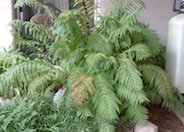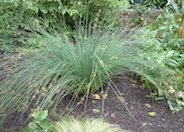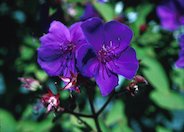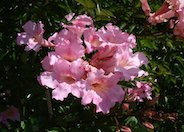
Common name:Sago-Palm
Botanical name:Cycas revoluta
Sago Palm resembles small palms; it is evergreen. It can slowly grow to 10'. It is used for a tropical effect and also looks great in planters. In the low desert, light shade and additional moisture are best. Side sprouts can form multi-trunked individuals. Apply fertilizer at leaf expansion. This plant has few pests.

Common name:Giant Chain Fern
Botanical name:Woodwardia fimbriata
The Giant Chain Fern is a large fern that grows 4'-8' tall. It can tolerate full sun but does best in some shade. This fern is native to California and is drought tolerant. -Cornflower Farms

Common name:California Gray Rush
Botanical name:Juncus patens
Although a wetland plant, Juncus patens can tolerate fairly dry conditions. It will slowly clump to 2'-3' wide and a height of 2'-2.5'. There are many selections of this species available with different heights and widths. It is carefree, with little to no maintenance. It provides great upright structure to many styles of landscapes.

Common name:Princess Flower
Botanical name:Tibouchina urvilleana
The Princess Flower is a rangy, loosely constructed evergreen shrub with oval, velvety leaves that are 3"-6" in length. Dramatic and elegant, 3" wide royal purple flowers form at the ends of the branches during the warm season. The shrub has very eye-catching flowers. When grown in the warmer valley areas, this plant prefers protection from hot, drying winds.

Common name:Pink Trumpet Vine
Botanical name:Podranea ricasoliana
Semi-evergreen vine grows at a moderate rate to 20' x 10'. Showy pink clusters of trumpet shaped flowers appear late summer to fall. Flowers are lightly fragrant. Accepts full sun to partial shade. Native to South Africa.
| Designer: Sunset Staff | LA Arboretum Sunset Section 25 |
Photographer: GardenSoft |
Soils and Compost:
Physical weed control, including mulching, or hand removal protects the watershed from harmful chemicals.
Water Saving Tip:
Mulching and adding compost to soil can minimize evaporation and help soil absorb and store water.
Integrated Pest Management:
Drip and other smart irrigation delivers water directly to roots, allowing no excess water for weeds.
